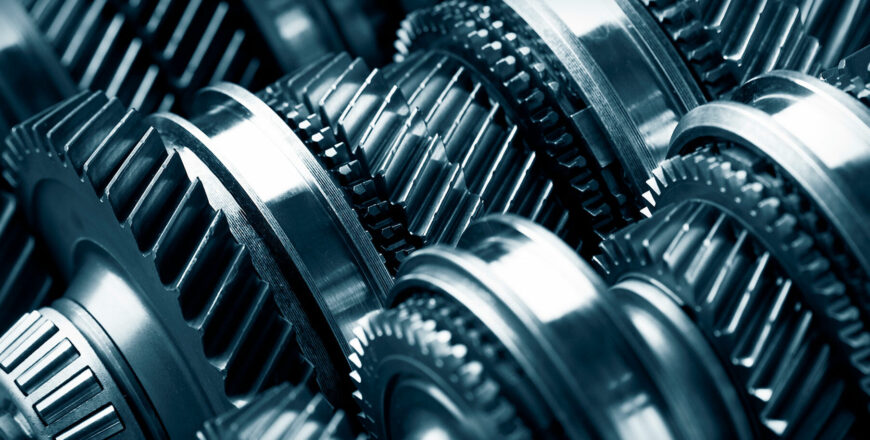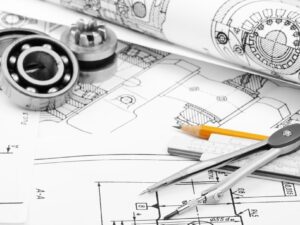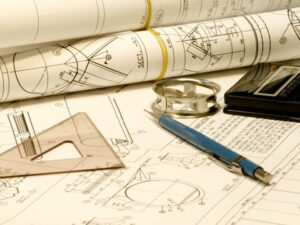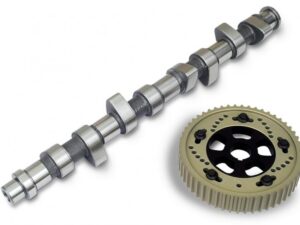KINEMATICS OF MACHINES
- Description
- Curriculum
- Reviews

Here we are provided this recorded video course which is cover following topics suggested by university syllabus.
GUJARAT TECHNOLOGICAL UNIVERSITY
MECHANICAL ENGINEERING
B.E. 3RD Semester
Subject Code: 2131906
KINEMATICS OF MACHINES
- Introduction of Mechanisms and Machines: – Concepts of Kinematics and Dynamics, Mechanisms and Machines, Planner and Spatial Mechanisms, Kinematics Pairs, Kinematic Chains, Kinematic Chains, Kinematic Diagrams, Kinematic Inversion. Four bar chain and Slider Crank Mechanisms and their inversion, Degree of freedom, Mobility and range of movement-Kutzbach and Grubler’s criterion, Number Synthesis, Grashof’s criterion.
- Synthesis and Analysis of Mechanisms: Position analysis (Analytical Technique): Loop closure (Vector Loop) representation of linkages, Position analysis of Four bar, slider crank and inverted slider crank mechanisms, Coupler curve, Toggle and Limit Position, Transmission angle, Mechanical Advantage. Dimensional Synthesis: Definitions of Type, Number and Dimensional Synthesis, Definition of Motion, Path and Function generation, precision position. Chebychev spacing, structural error, Freudenstein’s equation, two or three position synthesis (function generation only) of four bar and slider crank mechanisms by graphical and analytical methods. Velocity and Acceleration Analysis: Velocity and Acceleration Diagrams, Instantaneous Centre of Velocity, Rubbing Velocity, Velocity and Acceleration Images, Corioli’s component of acceleration. Special Mechanisms: Straight line mechanisms, Indicator diagram, Hooke’s Joint, Steering Mechanisms.
- Gear and Gear Trains: Gears: Terminology, Law of Gearing, Characteristics of involute and cycloidal action, Interference and undercutting, Centre distance variation, minimum number of teeth, contact ratio, spur, helical, spiral, bevel and worm gear, problems. Gear Trains: Synthesis of Simple, compound & reverted gear trains, Analysis of epicyclic gear trains.
- Cams and Followers: Introduction: Classification of cams and followers, nomenclature, displacement diagram of follower motion, kinematic coefficients of follower motion. Synthesis and Analysis: Determine of basic dimensions and synthesis of cam profiles using graphical methods. Came with specified contours.
Basic Kinematics
-
1Introduction
-
2Kinematic Link or Element
-
3Machine
-
4Structure
-
5Constrained Motions
-
6Kinematic Pairs
-
7Kinematic Chain
-
8Types of Joints in a Kinematic Chain
-
9Closed and Open Kinematic Chain
-
10Mechanism
-
11Inversion of a Kinematic Chain
-
12Grashoff's Law
-
13Degree of Freedom (DOF)
-
14Mobility and Degree of Freedom (DOF)
-
15Kutz Bach Criterion
-
16Grubler's Criterion
Synthesis and Analysis of Mechanism
-
17Introduction
-
18Classification of Synthesis Problems (Tasks of Kinematic Synthesis)
-
19Dimensional Synthesis
-
20Analytical Method for Dimensional Synthesis of Four Bar Chain Mechanism (Freudenstein's Equation)
-
21Synthesis of a Function Generation
-
22Synthesis of Path Generation or Coupler Curve Synthesis
-
23Three Position Motion Synthesis of Four Bar Chain Mechanism (Body Guidance)
-
24Complex Algebra Method
-
25Computer Applications in the Kinematic Analysis of Simple Mechanisms
-
26Computer-Aided Analysis of Four-Bar Chain Mechanism
Velocity and Acceleration Analysis
-
27Introduction
-
28Linear and Angular Velocity
-
29Representation of Velocity by Vectors
-
30Velocity Analysis by Relative Velocity Method
-
31Application of the Relative Velocity Method
-
32Velocity Analysis by Instantaneous Centre Method
-
33Three Centers in Line Theorem (Aronhold-Kennedy's Theorem)
-
34Steps to Locate Instantaneous Centers
-
35Angular Velocity Ratio Theorem
-
36Linear and Angular Acceleration
-
37Motion of a Particle Moving in a Circular Path
-
38Acceleration Diagram of a Link by Relative Acceleration Method
-
39Outline Procedure of Drawing the Acceleration Diagram of a Mechanism
-
40Coriolis Component of Acceleration
-
41Klein's Construction
-
42Analytical Method
Special Mechanisms
Gears
-
51Introduction
-
52History of Gears
-
53Advantage and Disadvantage of Gear Drive
-
54Classification of Gears
-
55Comparison of Gears
-
56Gear Tooth Terminology
-
57Law of Gearing (Condition for Constant Velocity Ratio)
-
58Velocity of Sliding of Teeth
-
59Conjugate Profile
-
60Forms of Gear Tooth Profile
-
61Comparision of Cycloidal and Involute Tooth Gear
-
62Standard Tooth Profiles or Systems
-
63Length of Path of Contact
-
64Length of Arc of Contact
-
65Contact Ratio or Number of Pair of Teeth in Contact
-
66Interference in Involute Gears
-
67Undercutting
-
68Critical or Minimum Number of Teeth to Avoid Interference
-
69Methods to Avoid Interference
-
70Effect of Cener Distance Variation on Velocity Ratio
-
71Rack Shift
-
72Fouling ( Interference in internal gears)
-
73Friction between Gear Teeth
-
74Static Force Analysis of Spur Gear
-
75Introduction to Helical Gear"s
-
76Terminology of Helical Gear
-
77Virtual Number of Teeth or Number of Teeth on Equivalent Spur Gear
-
78Force Analysis of Helical Gears
-
79Velocity Ratio of Helical Gears
-
80Centre Distance of Helical Gears
-
81Introduction to Spiral Gears
-
82Shaft Angle of Spiral Gears
-
83Velocity of Sliding between Spiral Gears
-
84Center Distance Between Two Spiral Gears
-
85Efficiency of Spiral Gears
-
86Introduction to Worm Gears
-
87Terminology of Worm
-
88Velocity Ratio and Center Distance Between Worm Gears
-
89Efficiency of Worm Gearing
-
90Introduction to Bevel Gears
-
91Terminology of Bevel Gear
-
92Pitch Cone Angles and Its Geometrical Relationship
-
93Force Analysis of Bevel Gears
Gear Trains
-
94Introduction
-
95Simple Gear Train
-
96Compound Gear Train
-
97Reverted Gear Train
-
98Design of Spur Gear Trains
-
99Epicyclic Gear Train
-
100Method of Finding Velocity Ratio of an Epicyclic Gear Train
-
101Epicyclic Gear Train With Bevel Gears
-
102Epicyclic Gear Train with Sun and Planet Wheel
-
103Torque and Tooth Load in Epicyclic Gear Train
-
104Types of Gear Box
Cams and Followers
-
105Introduction
-
106Classification of Followers
-
107Classification of Cams
-
108Terminology and Definitions
-
109Types of Motion of the Follower
-
110Motion of Follower with Uniform Velocity
-
111Motion of Follower with Simple Harmonic Motion
-
112Motion of Follower with Uniform Acceleration and Retardation
-
113Motion of Follower With Cycloidal Motion
-
114Determination of Cam Profile for a given Follower Motions
-
115Analysis of CAM with Specified Countours
-
116Jump Phenomenon
-
117kinematically Equivalent System of Cam and Follower
-
118Introduction to Advanced Cam Curves
-
119Pressure Angle and Methods to Control Pressure Angle
-
120Undercutting of Cam
Stars 5
1
Stars 4
0
Stars 3
0
Stars 2
0
Stars 1
0








